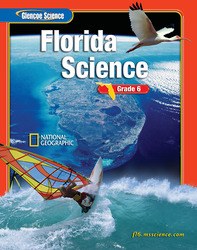1.
A) Chemical and mechanical weathering occur more rapidly in warm, wet climates. B) Chemical weathering occurs more rapidly in warm, wet climates, and mechanical weathering occurs more in cold climates. C) Mechanical weathering occurs more rapidly in warm, wet climates, and chemical weathering occurs more in cold climates. D) Chemical weathering occurs more rapidly in dry climates and mechanical weathering occurs more in windy climates. 2.
A) Different rocks create different depths of parent rock that affect plant growth. B) Different rocks provide different root stability for plant growth. C) Different rocks provide different nutrients for plant growth. D) Different rocks make water absorption more difficult. 3.
A) No-till farming B) Terracing C) Weathering D) Ice wedging 4.
A) in valleys B) steep slopes C) on gently sloping hills D) level ground 5.
A) oxidation B) erosion C) weathering D) ice wedging 6.
A) decayed organic matter and oxygen B) all answers are correct C) mineral fragments D) weathered rock and water 7.
A) horizon B B) horizon D C) horizon A D) horizon C 8.
A) humus B) clay C) litter D) soil 9.
A) all answers are correct B) raising livestock C) construction D) farming 10.
A) horizon D B) horizon A C) horizon B D) horizon C 11.
A) horizon D B) horizon A C) horizon B D) horizon C 12.
A) hydrochloric acid B) carbonic acid C) sulfuric acid D) ozone 13.
A) because gravity pulls on the plants and increases erosion B) because the lack of adequate vegetation affects the soil pressure and erosion rate C) because soil erosion is stopped by reduced vegetation D) because plant roots help keep the soil in place 14.
A) It washes it away. B) It moves the topsoil to other areas where it is more needed. C) It keeps it moist. D) It makes it more fertile. 15.
A) Increased surface area allows for more interactions of rocks with water and oxygen. B) Decreased surface area allows for more ice wedging. C) Decreased surface area allows for more interactions of rocks with water and oxygen. D) Increased surface area allows for more interactions of rocks with plants and animals. 16.
A) Farmers who plow their land uproot plant roots which hold soil in place. B) Farmers who plow their land remove soil to make planting more productive. C) Farmers who cultivate their land bring in livestock to help stop soil erosion. D) When farmers plow their land they leave it vulnerable to animals that use and remove soil to build their homes. 17.
A) Mechanical and chemical weathering can happen with the help of animals. B) Chemical weathering can occur with the help of water reacting with carbon dioxide, and water has nothing to do with mechanical weathering. C) Mechanical weathering occurs when rocks are broken by physical processes, and chemical weathering happens when chemical reactions dissolve minerals. D) Plant roots can help mechanical weathering occur, but have no impact on soil when it comes to chemical weathering. 18.
A) Burning fields leave ash and soot in the soil, making it impossible to grow crops. B) Uprooting trees makes the soil vulnerable to erosion. C) By clearing rain forests soil is vulnerable to direct sunlight that damages the richness of the soil. D) The soil is only good for farmers for a few years before the nutrients are gone because the soil is almost infertile below the first few centimeters. 19.
A) it makes the soil more fertile B) it keeps the soil moist C) it moves the topsoil to other areas where it is more needed D) it contributes sediment to the soil 20.
A) humus B) horizontal C) litter D) horizon
















